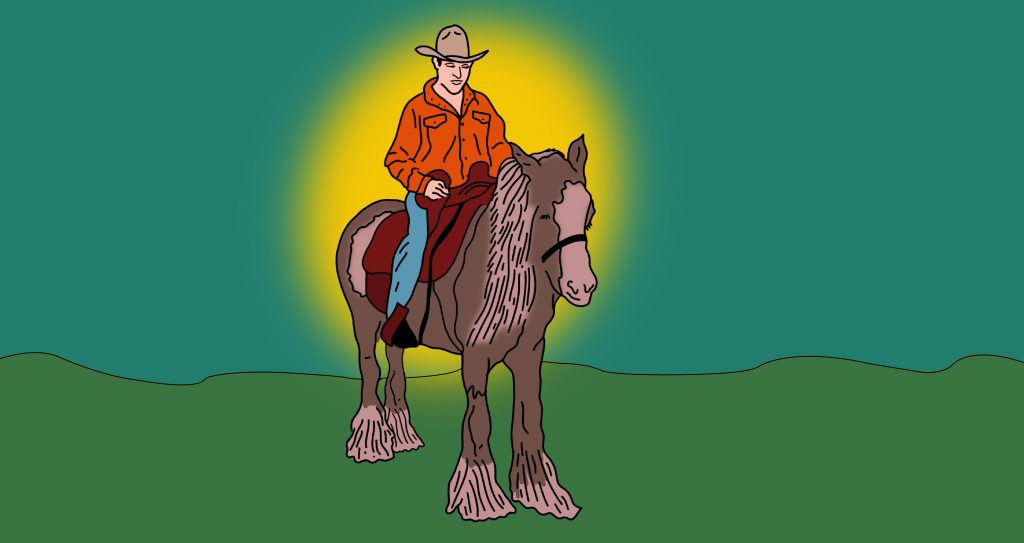July is Disability Pride Month, and in celebration of this observance, CHASI is proud to share the following guest post from Karsten Renaerts, an Accessibility Advisor for UFV’s Centre for Accessibility Services.
When I was asked if I wanted to contribute to this blog post, I enthusiastically said “Sure! I’d be happy to.” Then, I had to sit and think about it. What in the world is “Disability Pride” anyways? The phrase seemed foreign to me. I have been working here at UFV’s Centre for Accessibility Services for almost six years now, and it wasn’t a term I had come across. I should mention that I’m a person who identifies as being disabled. My primary diagnosis is cerebral palsy.
While writing this, I am reflecting on if it is alright to focus on “disability”? For so long our society has sought to turn the tide to remove negative language, to use person-first language, and be person-centred. As a result, we often find ourselves fumbling around words and terminology that are fluid and changing. I have found this to be true even for myself in my professional role as an Accessibility Advisor. When speaking with a student about their disability, I will often refer to it as a “condition” or “diagnosis” so as not to label them as disabled or lump them in with a group of people. After such conversations with students, I often wonder if I used all the “correct” terms.

Let me shift gears slightly and speak directly about some of my experiences as someone who has a disability. As I previously mentioned, I have cerebral palsy. However, there are aspects of my disability that are not readily apparent. While it is obvious that I walk and move differently, what is not seen or obvious are my mental health diagnoses, chronic pain, and fatigue. These aspects go unseen, and it has taken me years to be able to discuss my disability openly and with strangers. It has been a journey for me to be okay in my own skin. I didn’t want to be called disabled or be seen as different. As a youth, I always had something to prove and wanted to be “normal” like the kids in my friend circle. I would try desperately to keep up and often fall short.
Today, I’m happy to share my stories and experiences. In my personal life, I will often use humor to either cause a laugh or break the ice. People may not realize that cerebral palsy is neurological and not an issue with the limbs. If someone (usually kids or youth) asks what’s “wrong” with my legs, I’ll say something like: “Nothing, it’s all in my head… if my darn brain would send my legs the right signal, I’d be just fine.” When people see me using my wheelchair they sometimes ask how I’m able to drive my car. I’ll reply with a straight face “Well, I reach down and press the pedals with my hands, and steer with my chin.” I wait for their bewildered and shocked expression, then say “Just kidding, I have special hand controls in my car,” and then explain how those controls work. For me, these types of conversations help break the ice and can even start further conversations, where in the past they’d just make me uncomfortable.
If there is one thing that I’m passionate about, it is horses and horsemanship. This obsession likely wouldn’t have even been sparked if it wasn’t for my disability. I started riding horses in a therapeutic riding program as a child. Now I own horses and train them, but there have been times where I have gotten discouraged and frustrated. I am not an able-bodied horseman. I must adapt and practice adaptive horsemanship, and at times seek help if there is something I cannot do all by myself. On my personal social media posts, I often use #shuffleycowboy. In my own eyes, part of this is my humor and how I view my life and my self-identity. “Shuffley” is a phrase I started owning when I began hanging out at one of the professional horse training barns in Chilliwack. Sometimes horses react to my unsteady gait when I walk past, though eventually they get desensitized to it. I used to call out “Shuffley cowboy coming around the corner.” This gave the trainer time to reassure the horse so it wouldn’t spook when I came into view. For me #shuffleycowboy is like a badge I wear with pride, and something I happily identify with. It speaks to the fact that I am disabled and that I am passionate about horsemanship and cowboy culture. I see phrases like “Your disability doesn’t define you.” But I disagree. It’s a part of my daily life and I have had to accept it and learn to work with it while still enjoying my life.
I think I will close with a quote that summarizes how I feel about disability pride from Peter Dinklage as Tyrion Lannister in one of my favourite TV shows, Game of Thrones. “Never forget what you are. The rest of the world will not. Wear it like armour. It can never be used to hurt you.”
Getting to a place where one can be proud of their disability is a journey of self-discovery, self-acceptance, and self-love. It’s like riding a river. It ebbs and flows, and some days are easier than others.
This illustration by Celina Koops is part of CHASI’s ongoing series acknowledging some of the significant annual observances that align with our core values. To learn more and see the other illustrations in this series, please visit our observances page.

